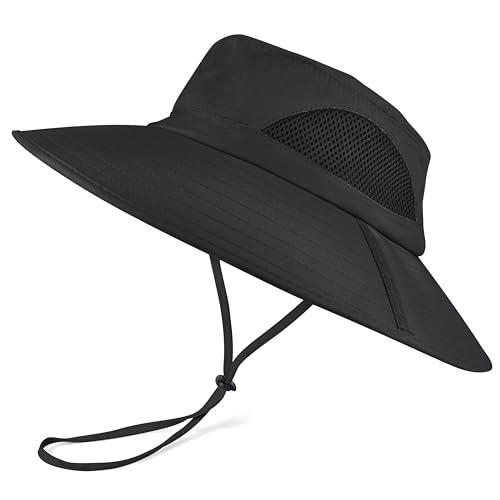What not to prune in spring – avoid damaging these 10 plants by trimming too early, and when you should prune instead
Pruning at the wrong time of the year can harm your plants and reduce flowering


Pruning is an essential gardening task, but timing is everything. While spring is the season for tidying up your yard, cutting back the wrong plants too early can lead to fewer flowers, weakened growth or even long-term damage. As a former professional gardener working in the UK and Italy, I have seen firsthand how mistimed pruning can leave plants struggling.
Spring may feel like it’s arriving late this year after a particularly harsh winter. From historic snowstorms in New Orleans to wind chills plunging as low as -54°F (-47.8°C) in North Dakota, much of North America has endured an extreme start to 2025. As we finally look forward to warmer days in March and April, many gardeners will be eager to get trimming and tidying. However, before you do anything, it’s crucial to know what not to prune in spring.
So, while you might already know what plants to prune in spring, it is just as important to avoid snipping certain trees and shrubs too soon. Here, I reveal 10 plants you should leave alone this season to ensure a thriving and healthy garden all year long.
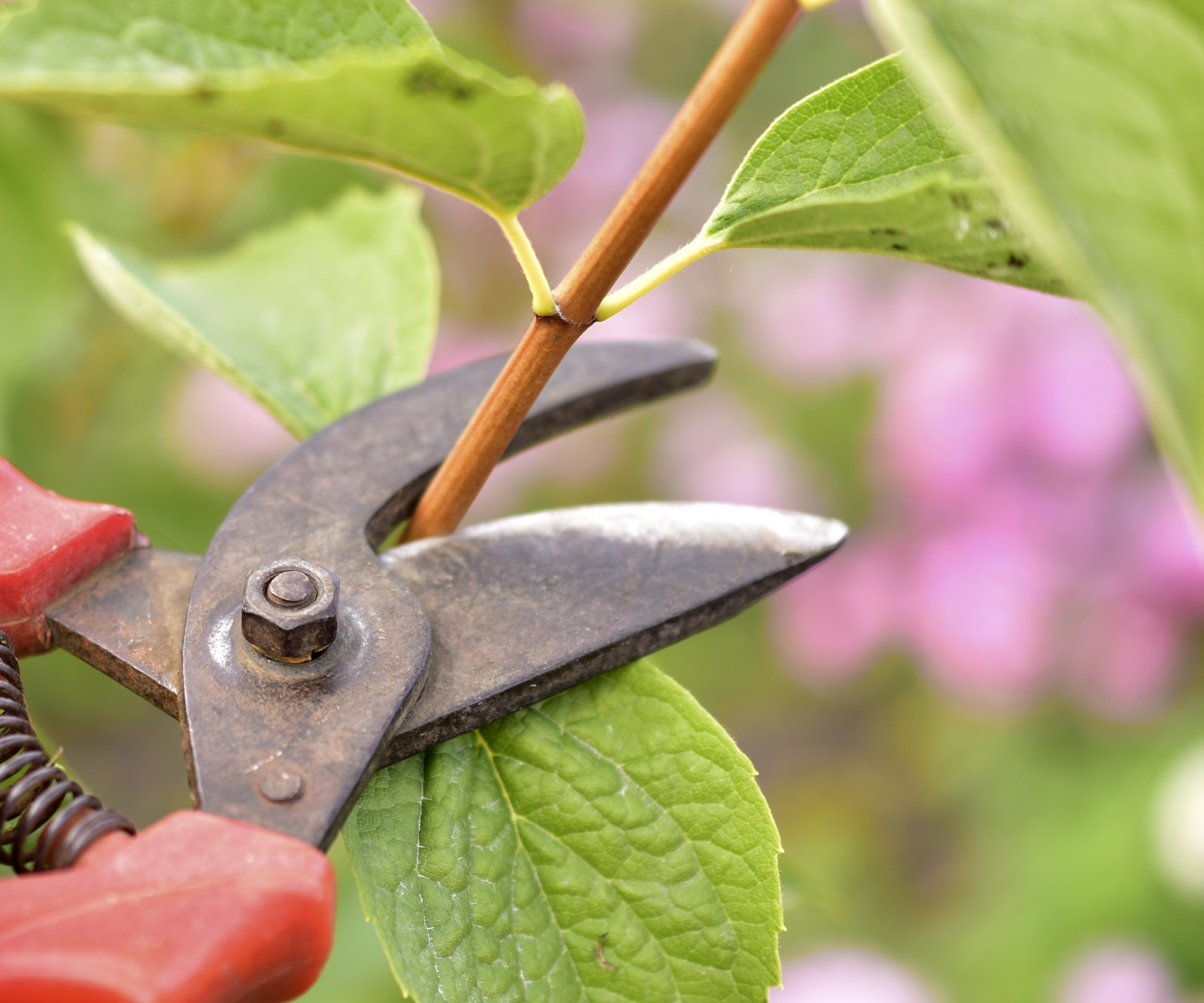
What not to prune in spring
One of the most common pruning mistakes is trimming plants at the wrong time of year. Your pruning schedule will differ depending on where you live and US hardiness zones, with warmer, southerly regions such as California, Georgia and Florida experiencing spring far sooner than those of us in cooler regions.
Wherever you live and whenever spring arrives, it will be tempting to rush outdoors and grab a pair of shears, but before you do, take a few minutes to read my guide on what not to prune in spring, including advice on shrubs to never hard prune.
1. Weigela
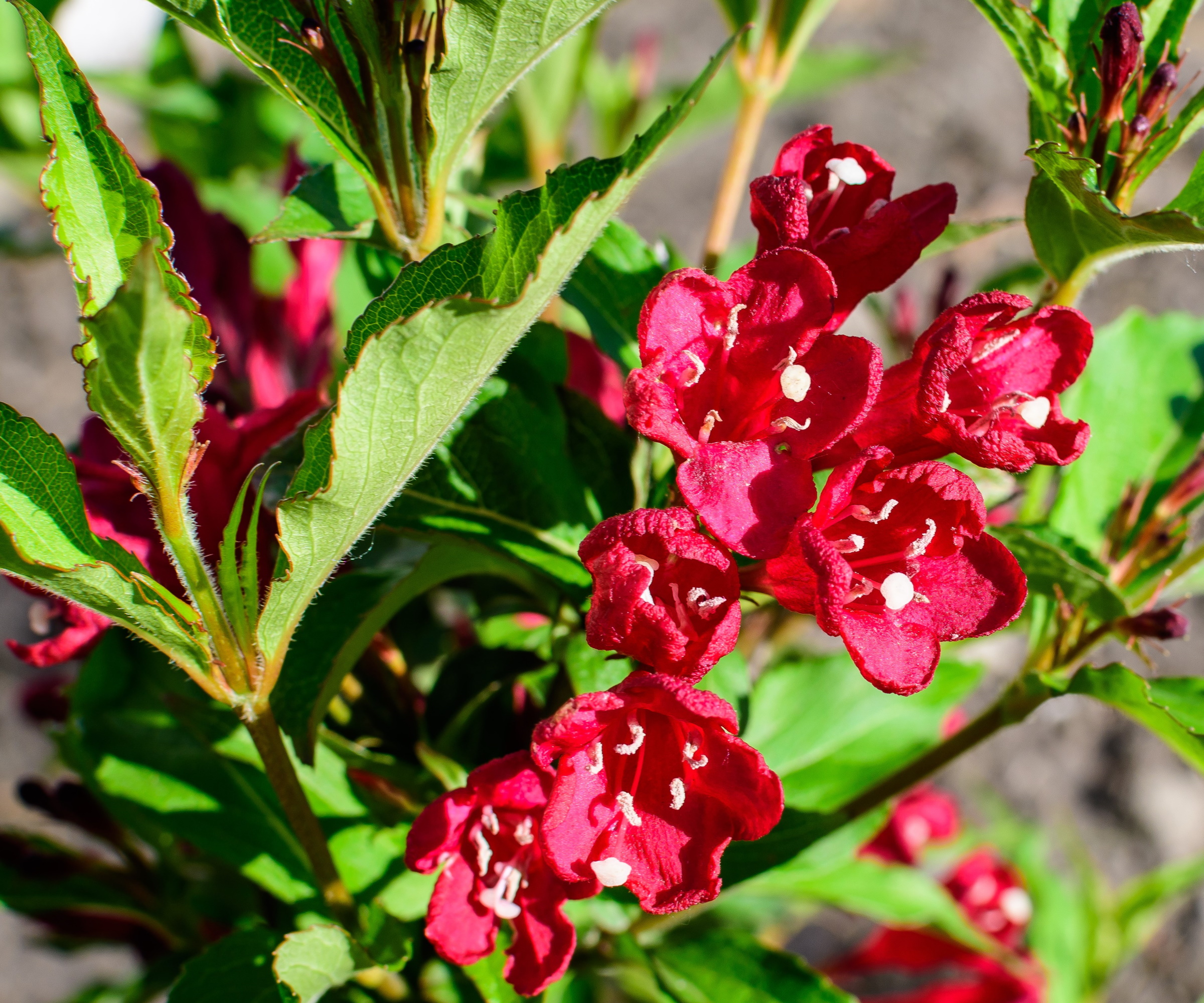
Weigela are popular flowering shrubs for full sun, filling backyard borders with colorful blooms during spring. If you are anything like me, you will love the trumpet-shaped flowers that open from mid to late spring, usually around May and June.
In terms of how to prune weigela, this shrub should not be pruned until after flowering, so you want to hold off until the floral show has ended. The correct time to trim can be in late spring in some areas or early summer in others. Weigela shrubs flower on old wood, so pruning right after flowering ensures that the plant's energy is directed into new growth that will bloom the following spring.
If you are in the market for an unusual variety this year, try growing Weigela florida 'Spilled Wine', with live plants available from Amazon. This variety has purple leaves and pink blooms which look particularly impressive when grown in containers.
2. Viburnum
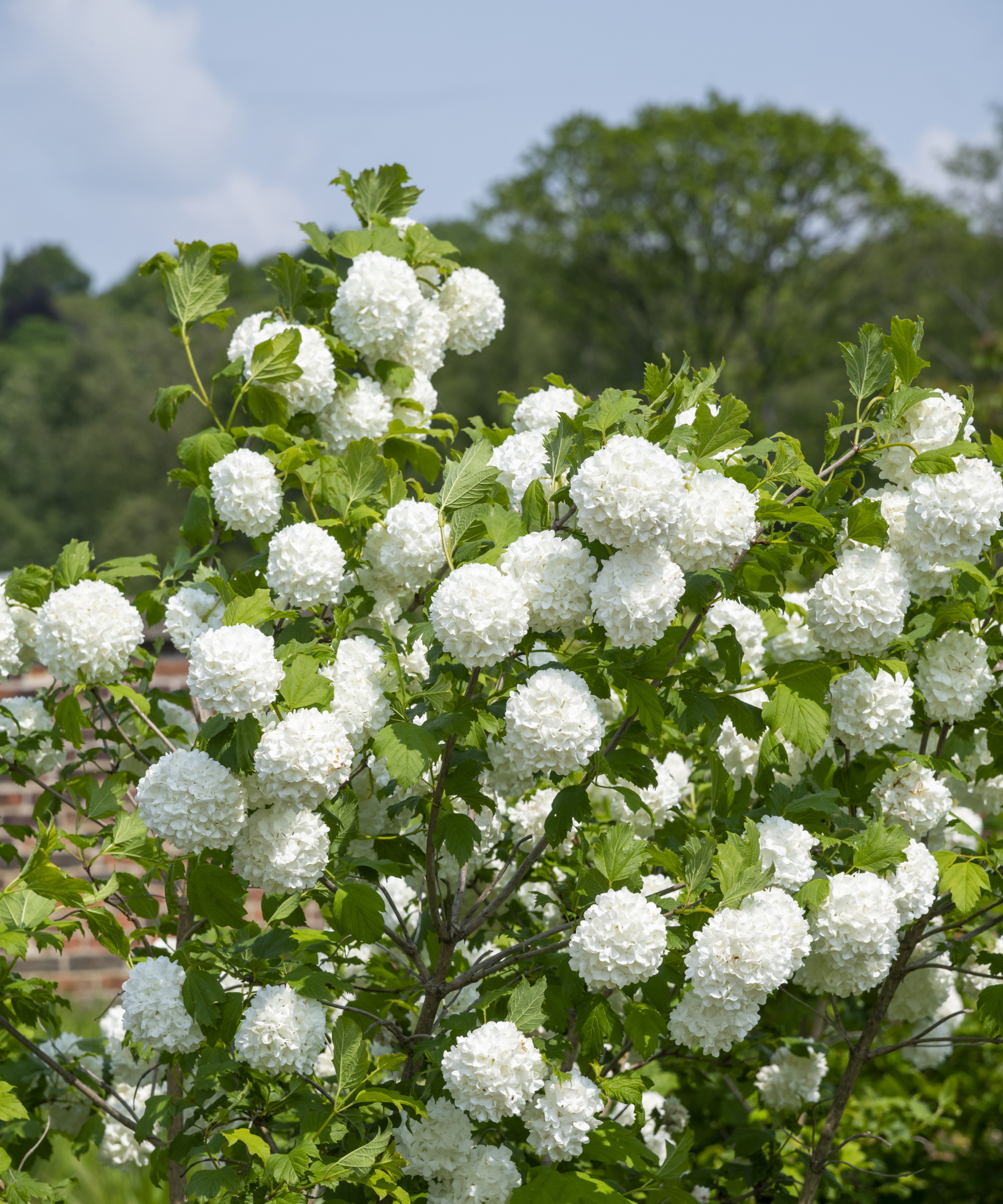
Viburnums are impressive winter and spring flowering shrubs that tend to be slow-growing. For this reason, they do not need significant annual pruning, bar removing any dead, damaged or diseased wood that you might identify.
The correct time to prune viburnums is after they have flowered, so while this will vary on the species, many spring flowering varieties, including Viburnum opulus - also known as the snowball bush - should be pruned in early summer. If you do have a winter flowering viburnum, such as Viburnum tinus, they can be trimmed in spring. Prune lightly and remember the one-third pruning rule when shaping, to avoid removing too much.
If you require a new pair of pruners, why not invest in Japanese gardening tools that not only look good but will get the job done year after year? I particularly like the short-handled shears for lighter pruning jobs, such as these Okatsune pruning shears, available from Amazon.
3. Lilac
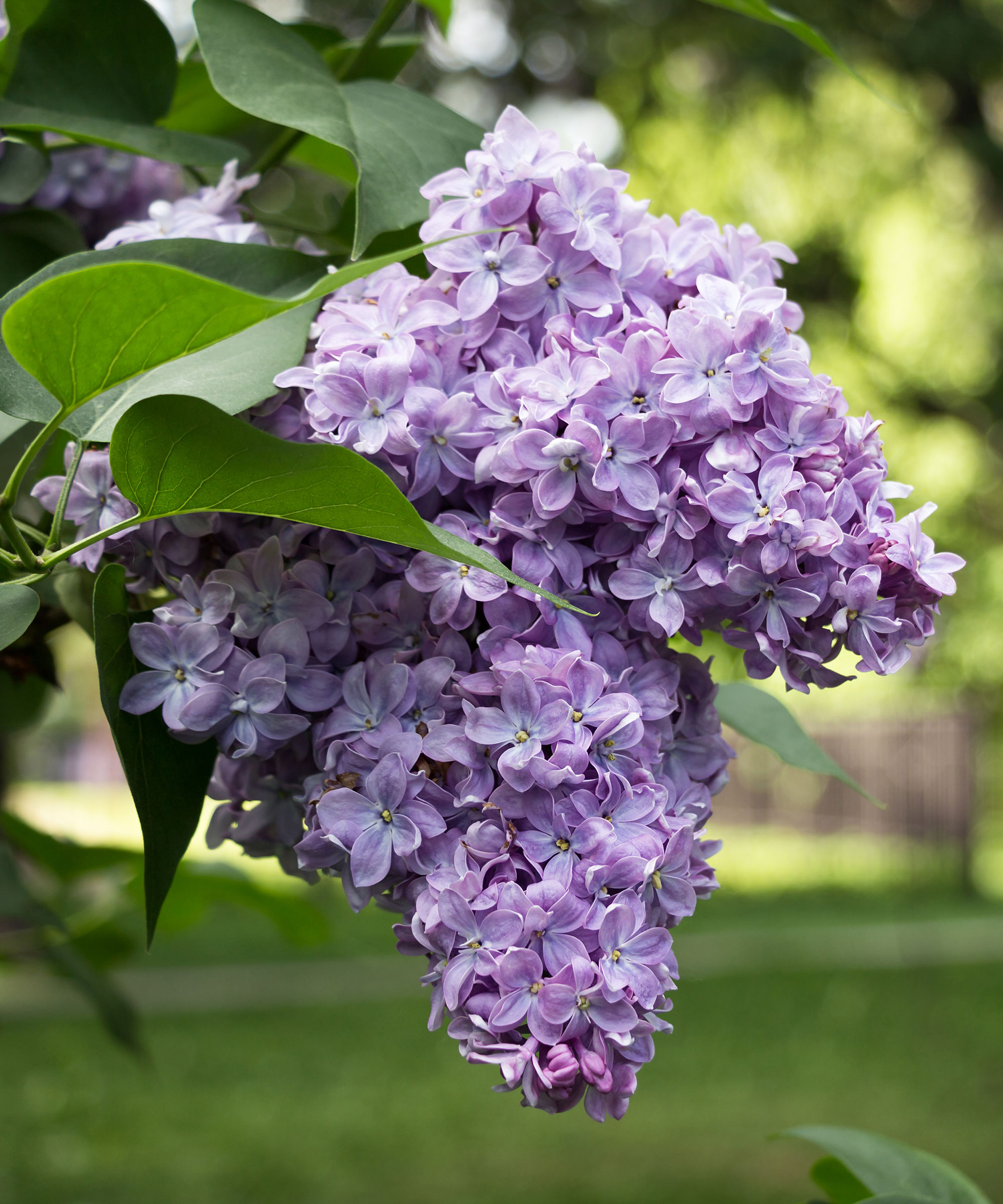
Lilacs are some of the best fragrant flowers, filling the garden with floral scent in springtime. If you are growing lilac in your yard, established plants will benefit from pruning, but this is best done in early summer.
Knowing when to prune lilacs is important, as taking out the pruning shears too early in the year can inadvertently remove flowering stems. Much the same as weigela, lilacs bloom on old wood and should be pruned after they finish flowering. While timings can vary, this is usually around June.
In terms of how to prune lilac plants after they have finished flowering, simply remove any dead, diseased or crossing branches, and lightly trim any stems that have dead flowers. You might also want to snip any suckers that are shooting at the base of the plant.
If you are pruning basal growth, it is worth investing in an extra thick gardening kneeler, available from Walmart, which will make the job significantly more comfortable.
4. Oak-leaf hydrangea
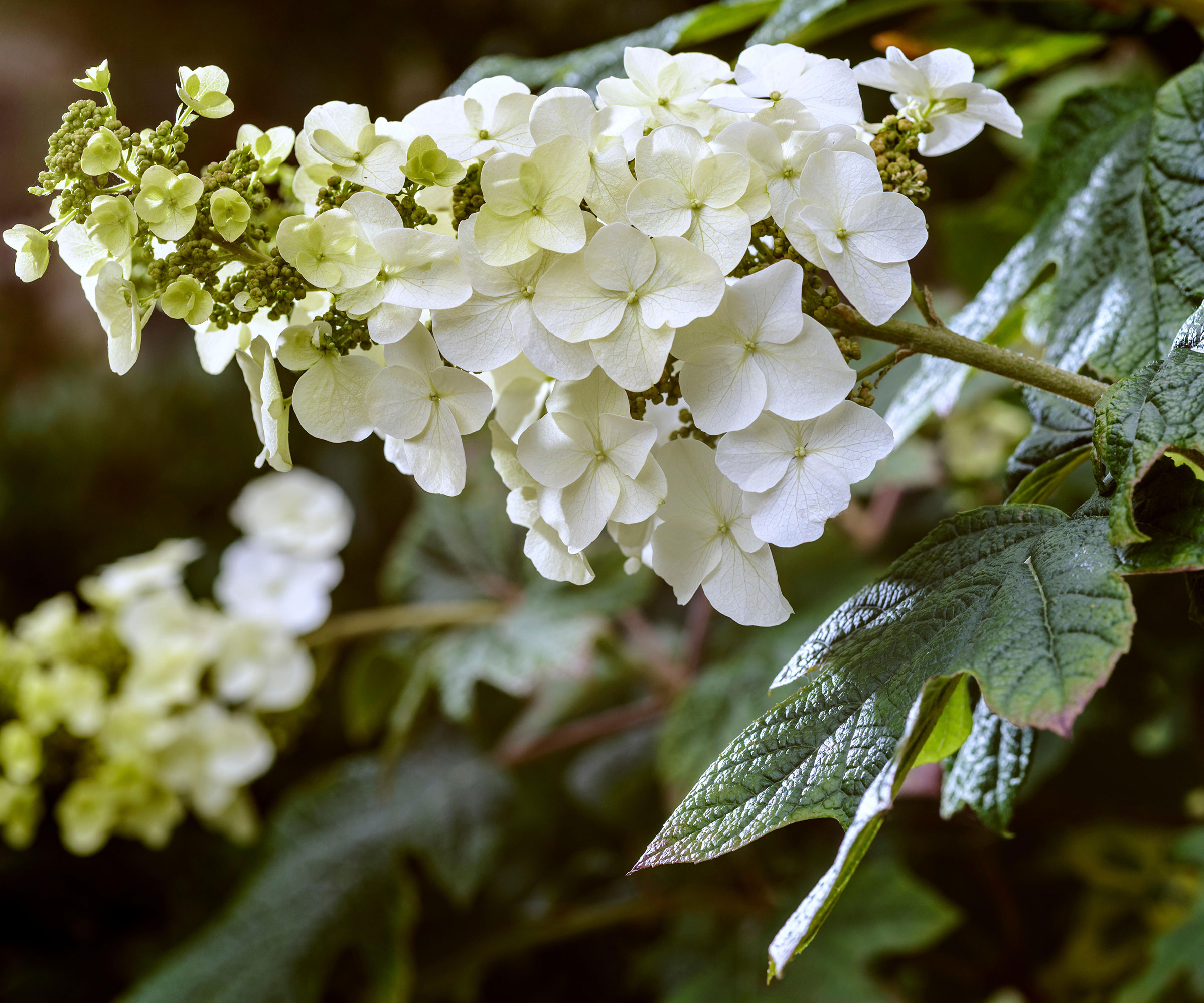
Oakleaf hydrangeas, in my humble opinion, are one of the best hydrangea varieties. When I was working as head gardener at a private estate in the Val d'Orcia region of Tuscany, we filled two shady beds with Hydrangea quercifolia, and both the foliage and flowers helped to add color to any otherwise dark section of the garden.
In terms of when to prune an oakleaf hydrangea - similar to all old wood flowering hydrangeas - you want to trim them after they have finished flowering. Cutting in the spring would be a hydrangea pruning mistake as you would be removing flowering stems. Pruning in mid-to-late summer gives the plants plenty of time to produce new growth that will bloom the following year.
5. Early-flowering clematis
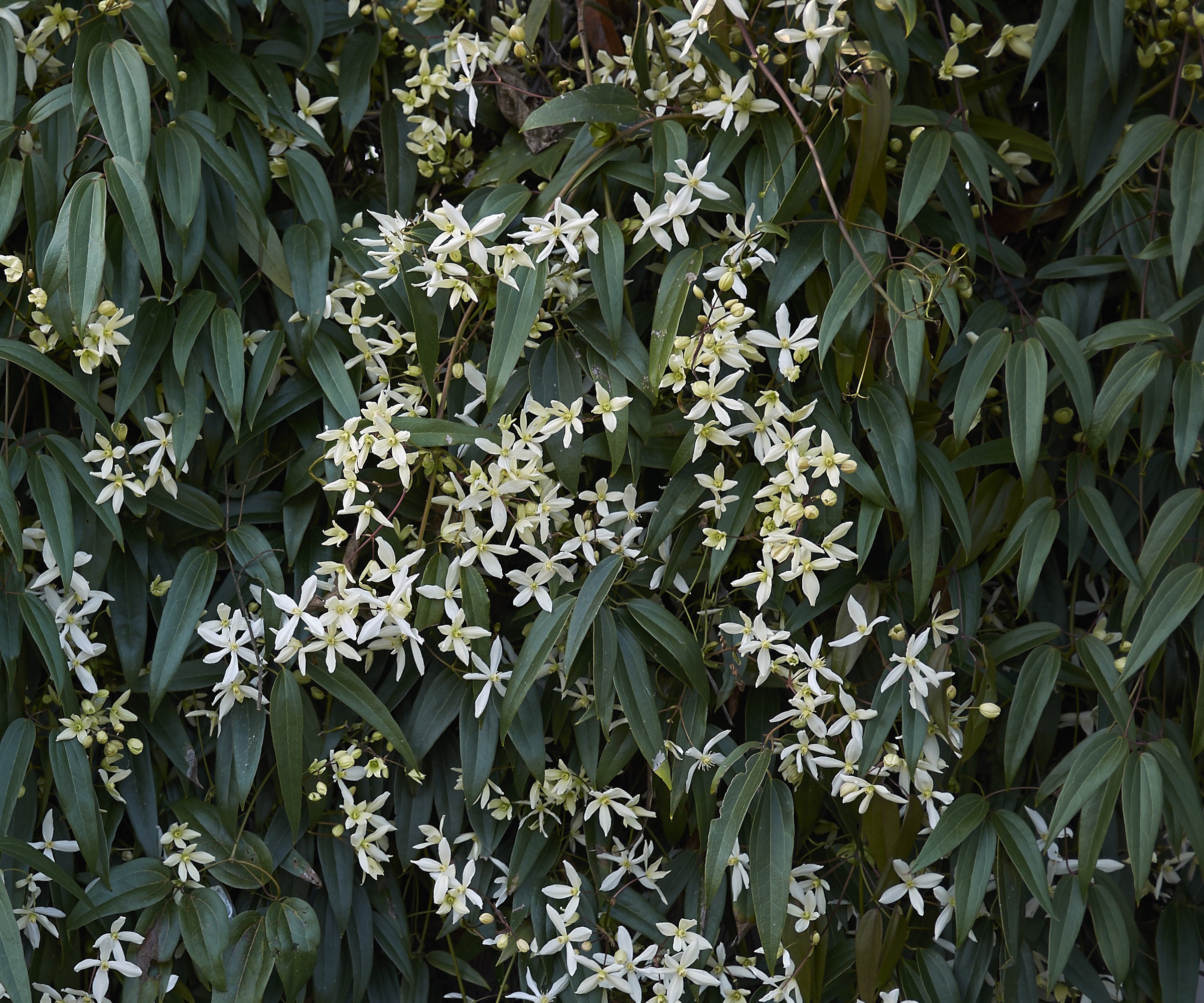
There are three different types of clematis and only group 2 and group 3 should be pruned in early spring. Group 1 clematis, including the evergreen Clematis armandii, seen in the image above, tend to flower in spring, so pruning is best left until after flowering, usually around early summer.
Most clematis plants can go one or two years without pruning, although regular trimming will help to keep them compact and full of flowers. Clematis armandii, for example, flowers in April on old wood that was produced the previous year, so giving it a tidy in June will keep it neat and controlled and full of blooms the following year.
When pruning, it can help to have a strong garden waste sack, like this 48-gallon model available from QVC, which can be used for clippings.
6. Rhododendron and azaleas
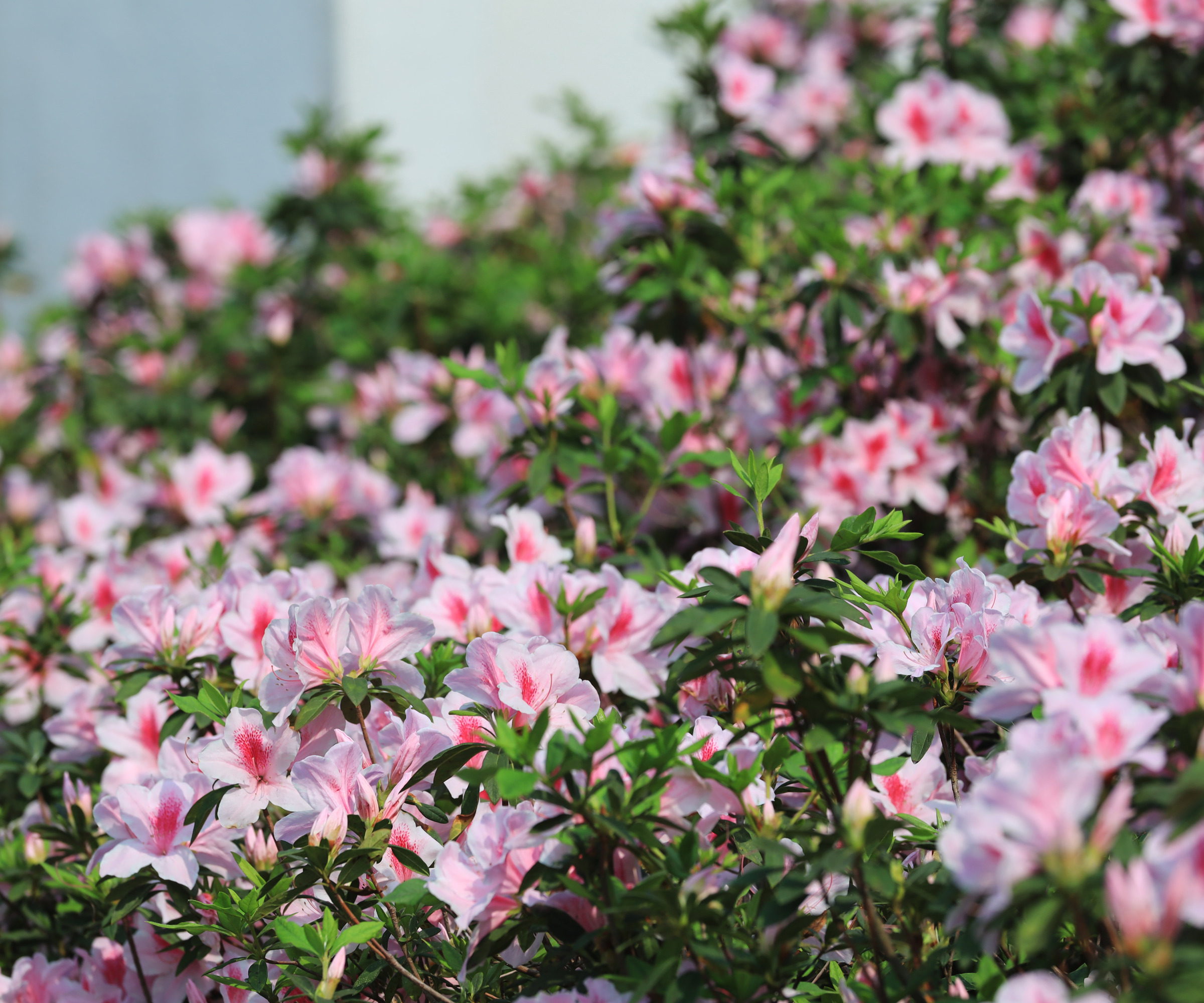
Rhododendrons and azaleas are popular flowering shrubs that bloom in spring and should not be pruned until after flowering. Knowing when to prune rhododendrons and how to prune azaleas is important, as snipping in spring will remove buds that are yet to open.
The correct time to trim will vary depending on climate and might be in late spring in some areas (such as US hardiness zone 9) or early summer in others (such as US hardiness zone 7). Once the last flower has dropped, you are then free to prune.
The only time you might prune rhododendrons or azaleas in late winter or early spring is if you want to rejuvenate an old plant and are not concerned about losing a season’s worth of flowers.
You might not know that rhododendrons are considered poisonous plants as they contain toxic substances called grayanotoxins. It is therefore a good idea to keep your hands and arms protected from the sap when you are pruning, using something like these long gardening gloves, available from Amazon.
7. Mock orange
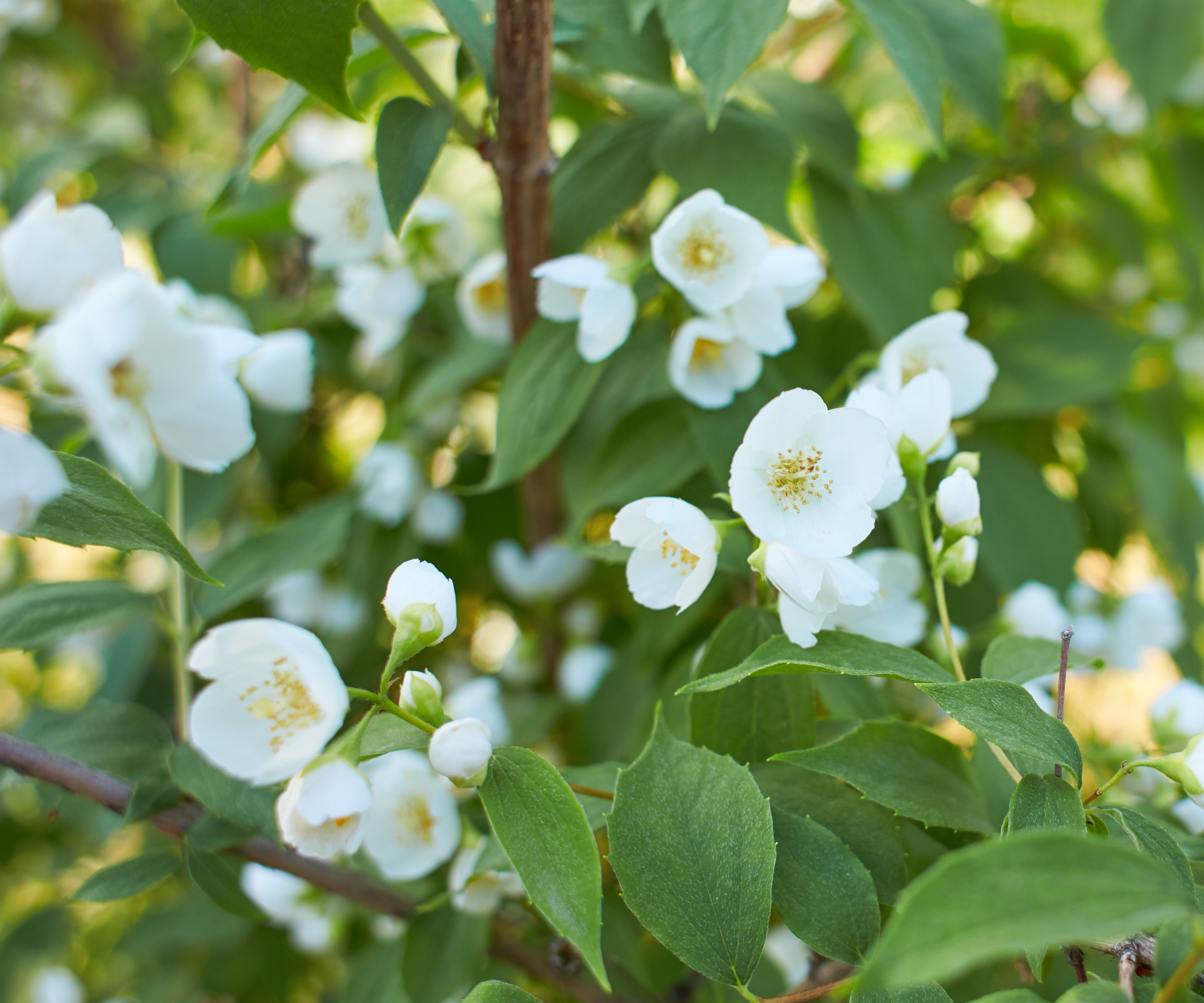
Philadelphus, also known as mock orange, produce white fragrant flowers from late spring. These citrus-scented flowers are produced on old wood from the previous year, so pruning in spring will remove unopened buds.
The right time to prune philadelphus comes in summer after they have flowered. Trimming quickly after the blooming has ended, usually around June or July, will give the shrub plenty of time to develop strong growth that will go on to bloom the subsequent year.
For taller philadelphus shrubs, I would recommend using extendable loppers which can help to reach stems at the top of the plant. These WORKPRO extendable loppers, available from Amazon, would prove helpful for larger specimens in your yard.
8. Magnolias
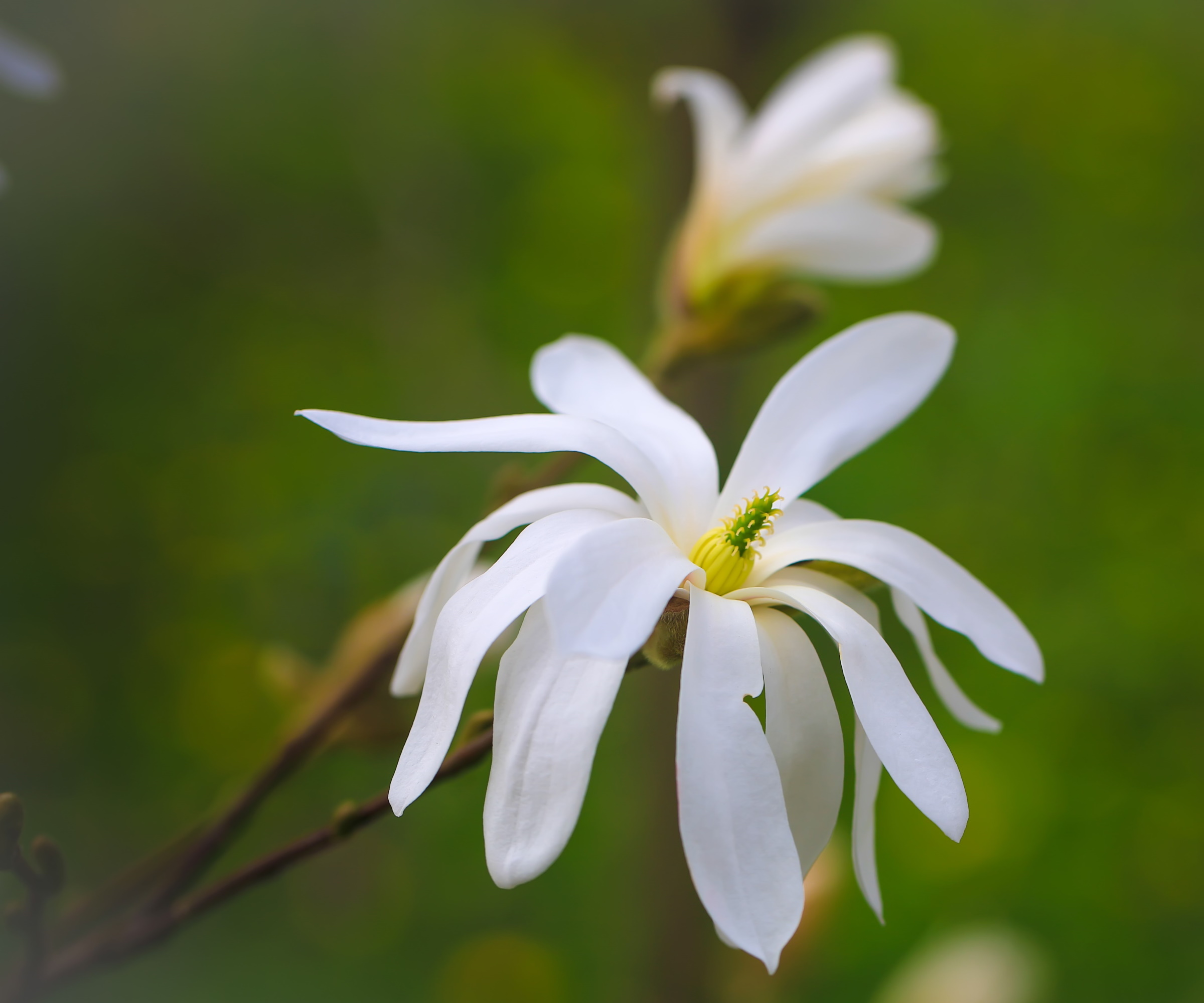
The best time to prune a magnolia tree is after it has flowered, which will vary depending on the species of magnolia trees you grow. Deciduous varieties, like the star magnolia or the saucer magnolia, should be pruned in early summer, whereas evergreen varieties, like the Southern magnolia, can be trimmed between late summer and early fall.
Pruning a magnolia in summer minimizes stress on your tree. This is because the flow of sap slows down post-flowering, meaning that your magnolia will not bleed as much as it would if you trimmed in late winter or early spring.
If you need to remove any dead or damaged branches, you might need to use a pruning saw, which will help to deliver a neater cut rather than struggling with pruning shears that are better suited to smaller branches. This Fiskars pruning saw, available from Walmart, can also be folded and locked, ideal for safe storage or transportation.
9. Honeysuckle
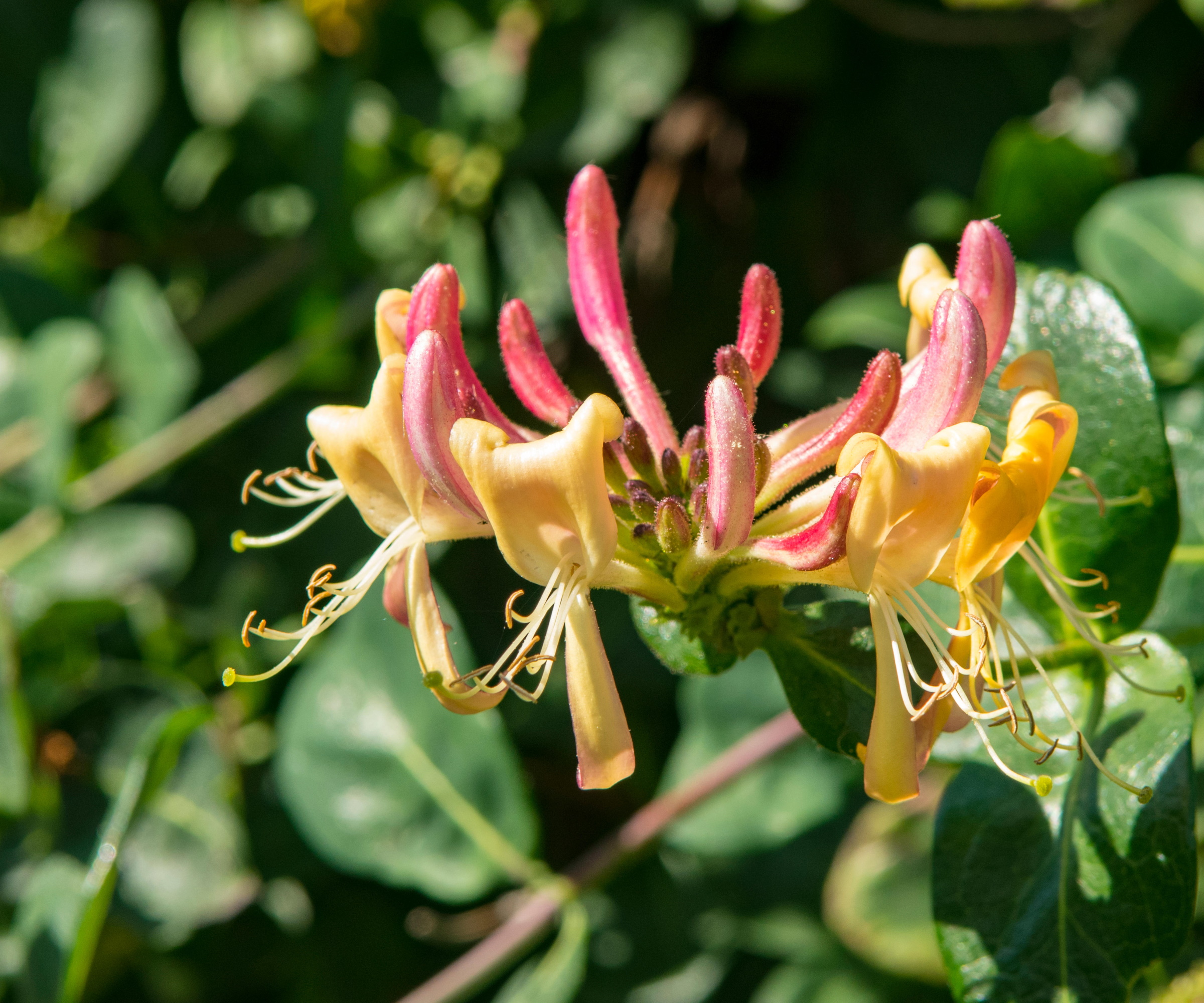
Honeysuckles are some of the best climbing plants that are highly valued for their unusual fragrant flowers. Fortunately for us, they do not tend to need a lot of pruning, but trimming at the wrong time in spring can deprive you of their scented blooms.
The right time to prune honeysuckles is after they have flowered, usually around mid to late summer, although some species can flower late into the growing season and some are even as late as fall. Regular trimming each year after flowering - whenever that might be - will keep the plant compact and stop it from getting too woody.
10. Serviceberry

Amelanchier spp., often called Juneberry or serviceberry trees, are popular deciduous trees that are native to North America. They are fantastic trees for fall color when their leaves turn a range of shades from orange to golden yellow.
The best time to prune serviceberry trees is late winter, before bud break. While you might be able to prune in early spring, you run the risk of removing emerging buds, which will result in a disappointing spring display.
When pruning, it is a good idea to inspect the tree for dead and diseased wood, which will usually be a different color to the healthy growth. Remove these branches, cutting down to a healthy joint.
FAQs
Should you cut back forsythia in the spring?
Forsythia tends to bloom in spring - usually between February and April - and the right time to prune is after the flowering period ends. Clipping too soon in the spring might remove this year's flowers. Instead, wait until all of the yellow petals have dropped, and prune in late spring. Remove any weaker wood before trimming back the flowering stems by up to a half.
If you grow any stone fruits, such as apricots, peaches, cherries and nectarines, these are also plants never to prune in spring. Stone fruits should be pruned in summer after they have finished fruiting, and pruning any earlier or later than this would be a fruit tree pruning mistake and leaves them at an increased risk of disease.

Thomas is a Content Editor within the Gardens Team at Homes and Gardens. He has worked as a professional gardener for both public spaces and private estates, specializing in productive gardening, growing food and flowers. Trained in Horticulture at the Garden Museum, he has written on gardening and garden history for various publications, including The English Garden, Gardens Illustrated, Hortus, The London Gardener and Bloom. He has co-authored a Lonely Planet travel book, The Tree Atlas, due out in 2024.
You must confirm your public display name before commenting
Please logout and then login again, you will then be prompted to enter your display name.



